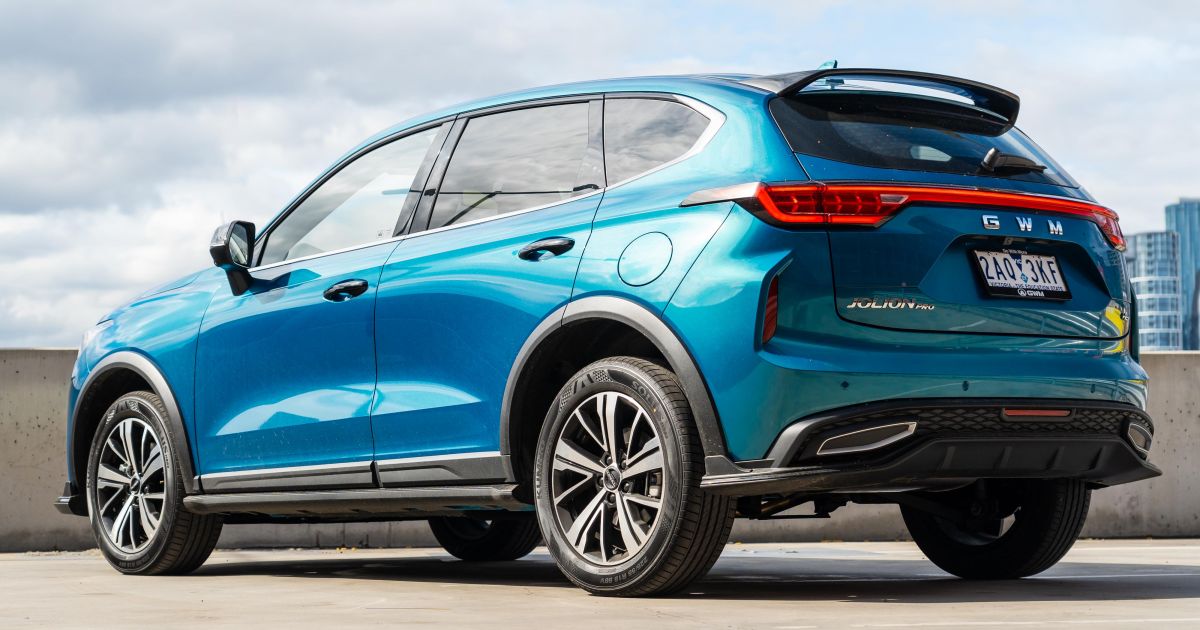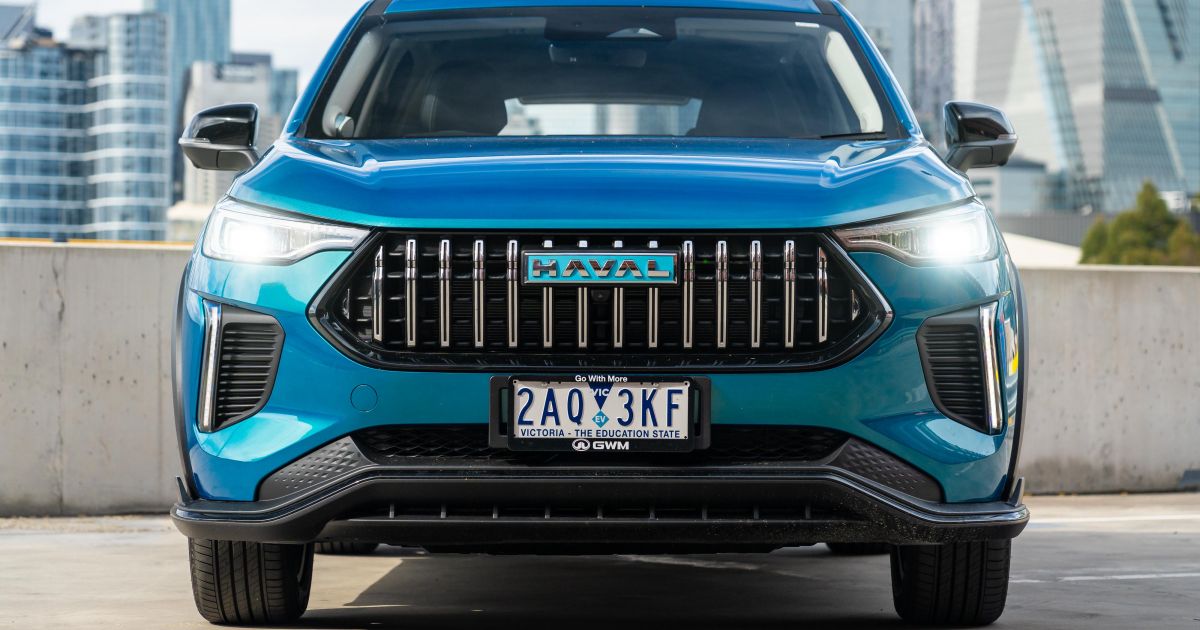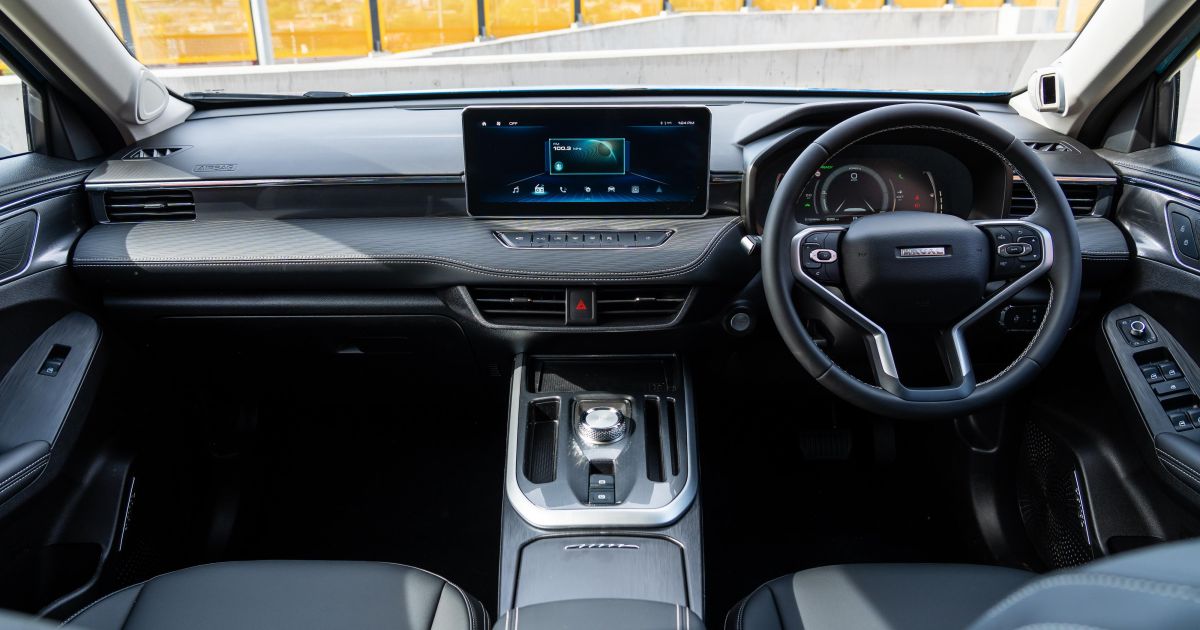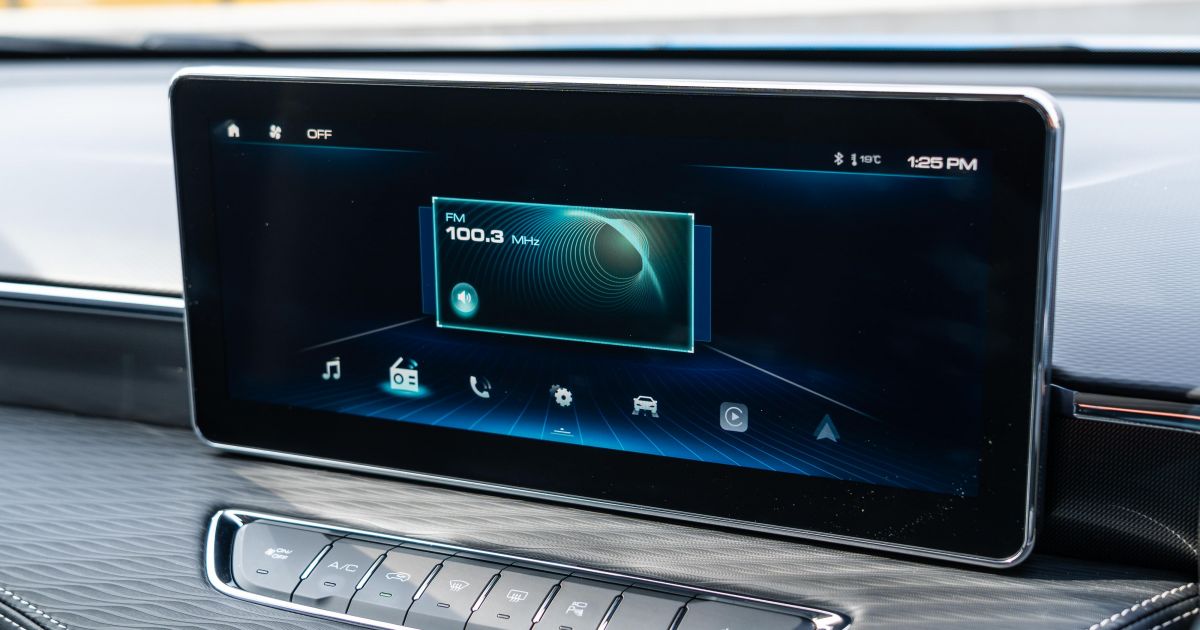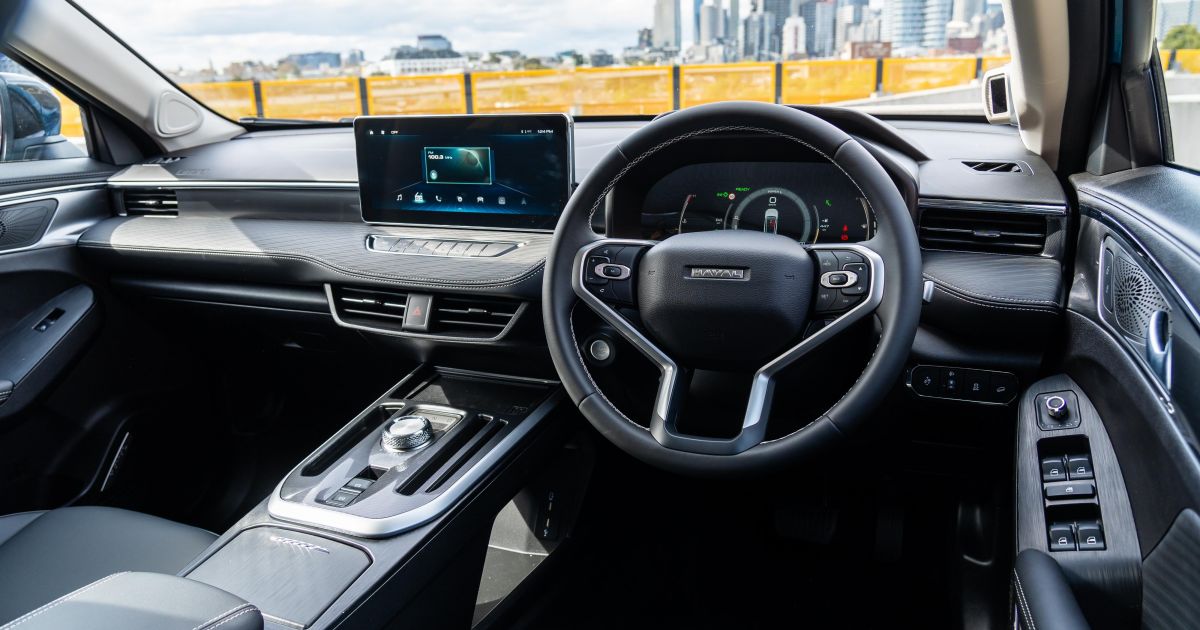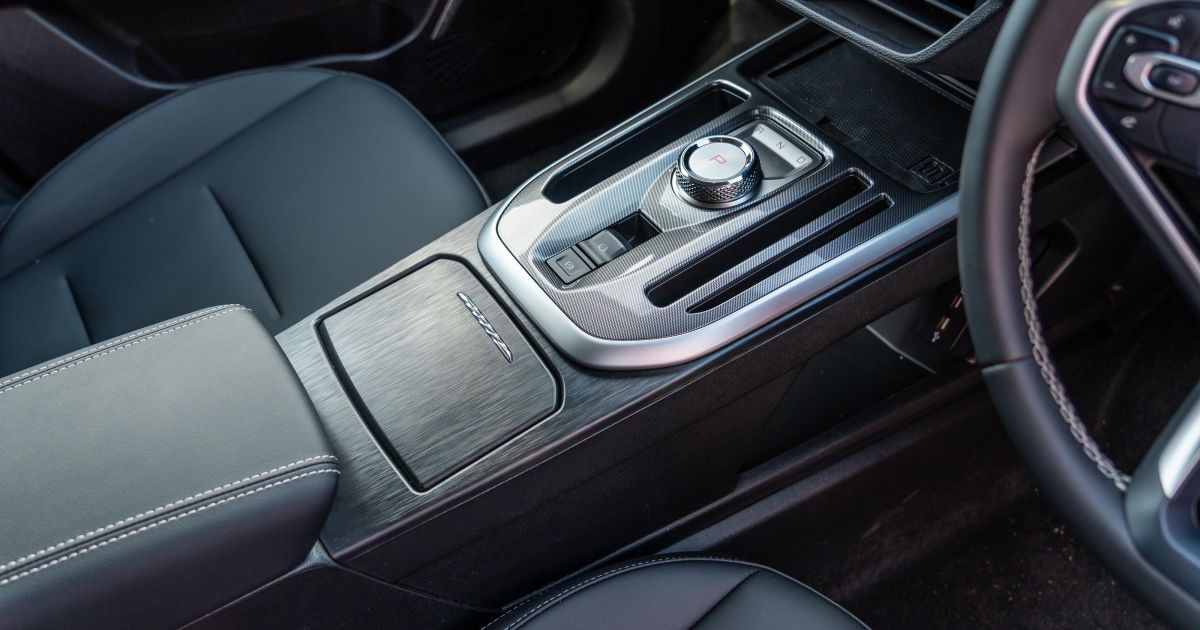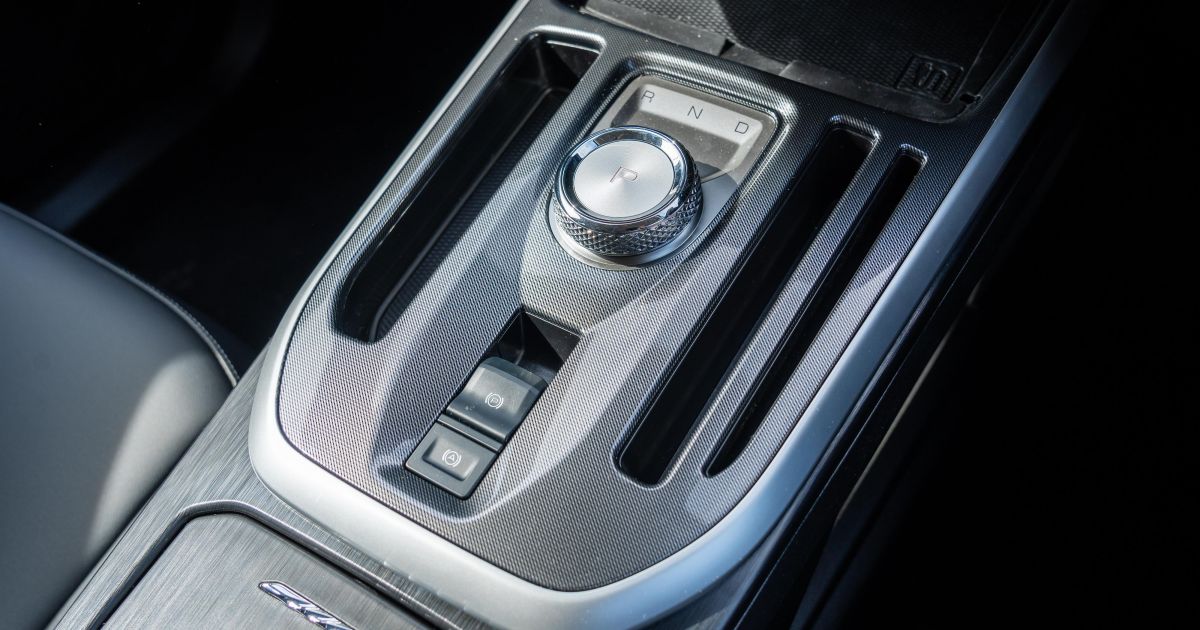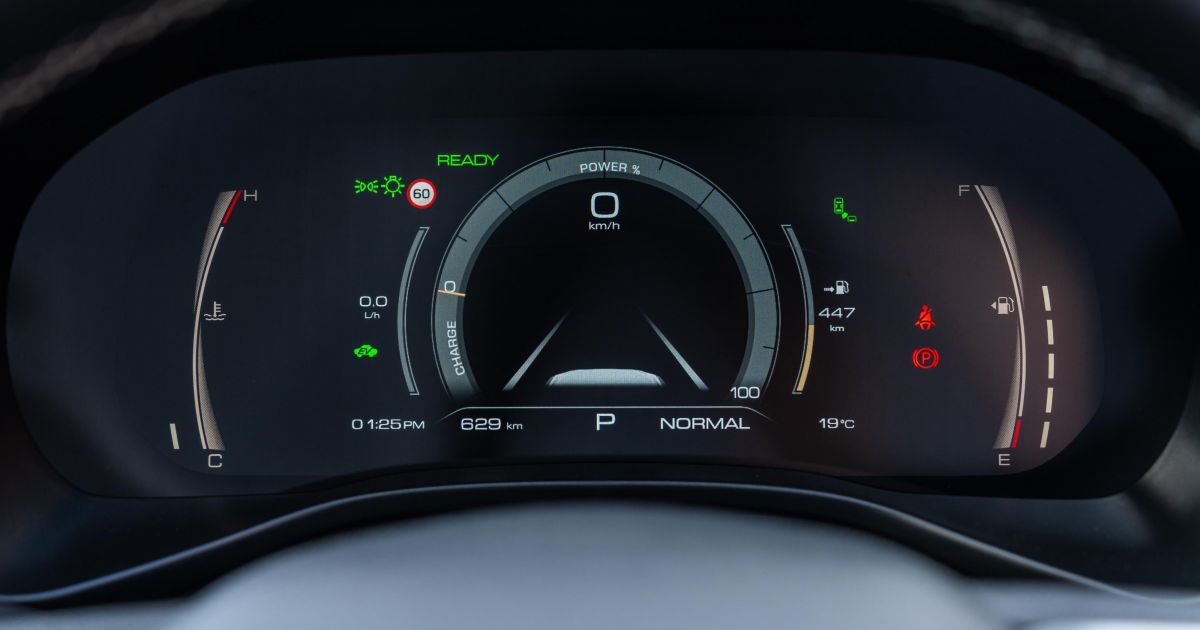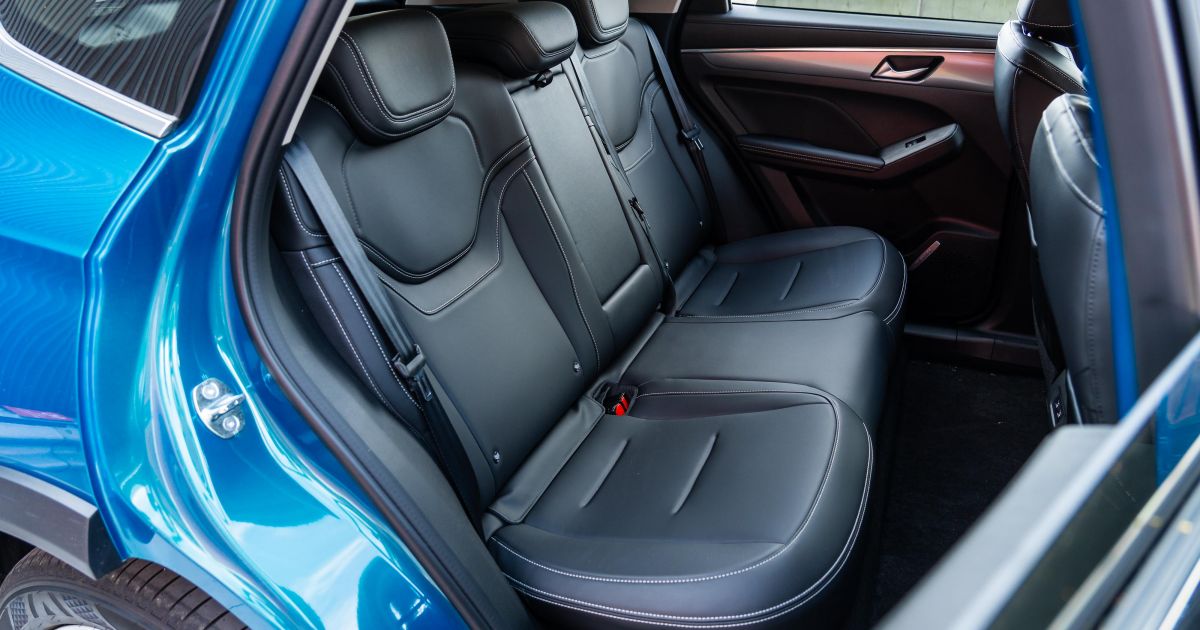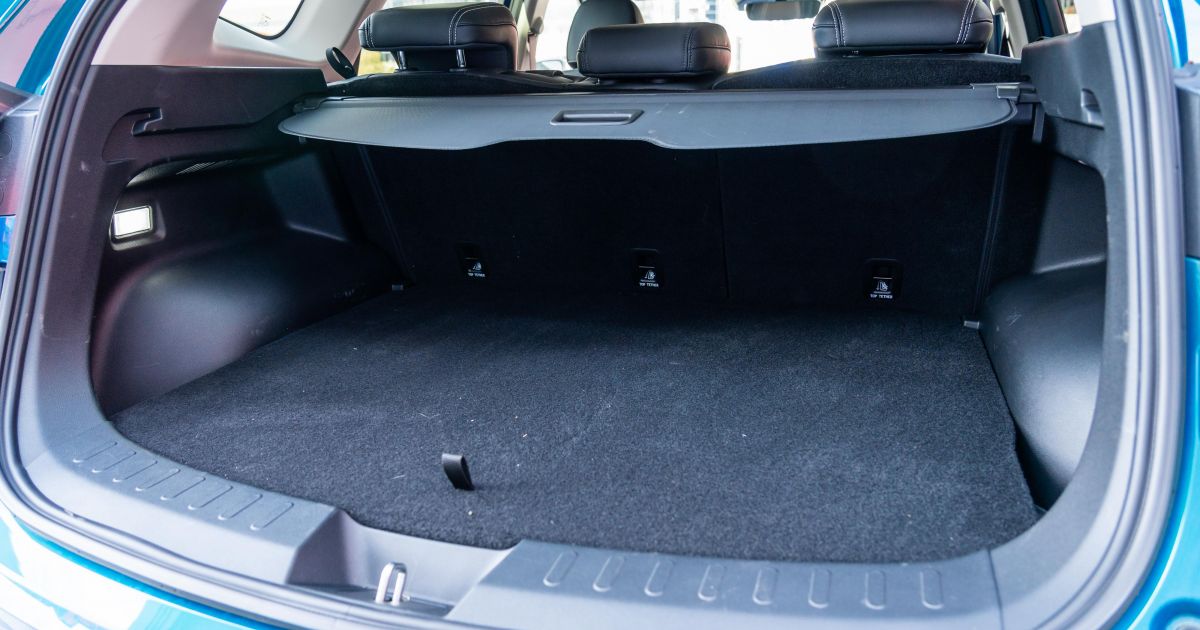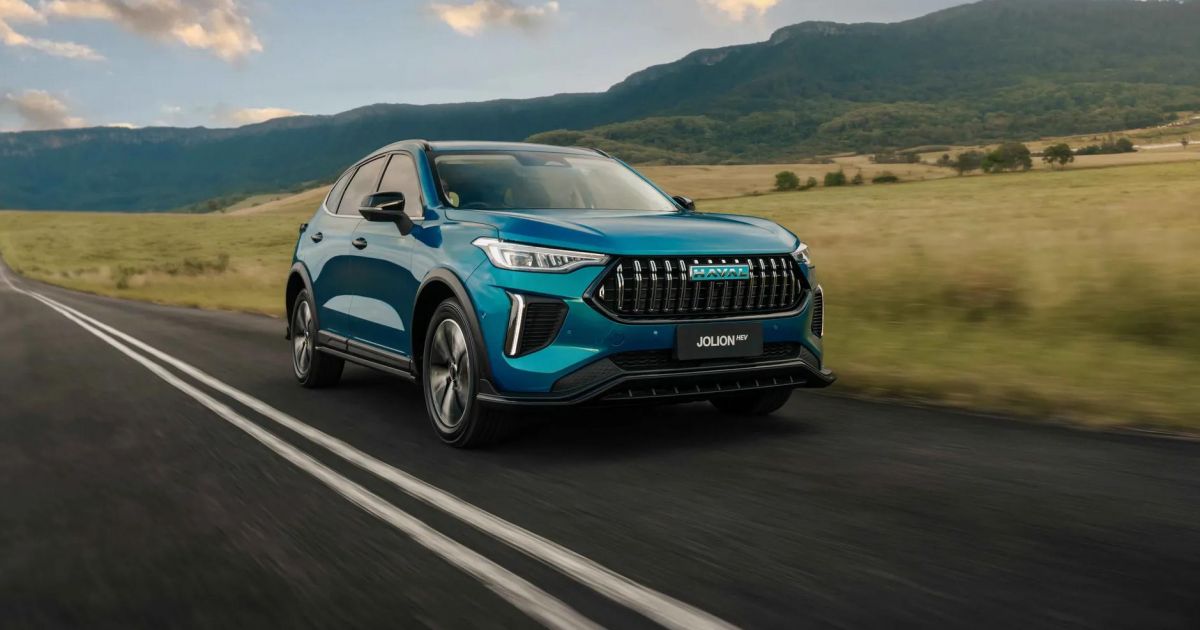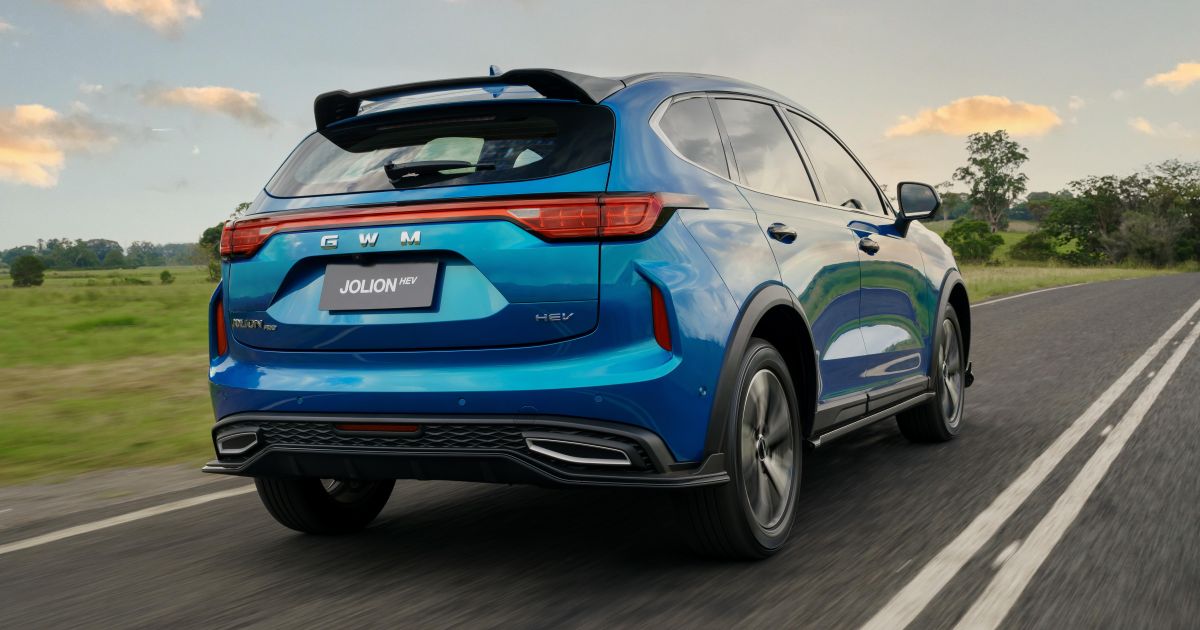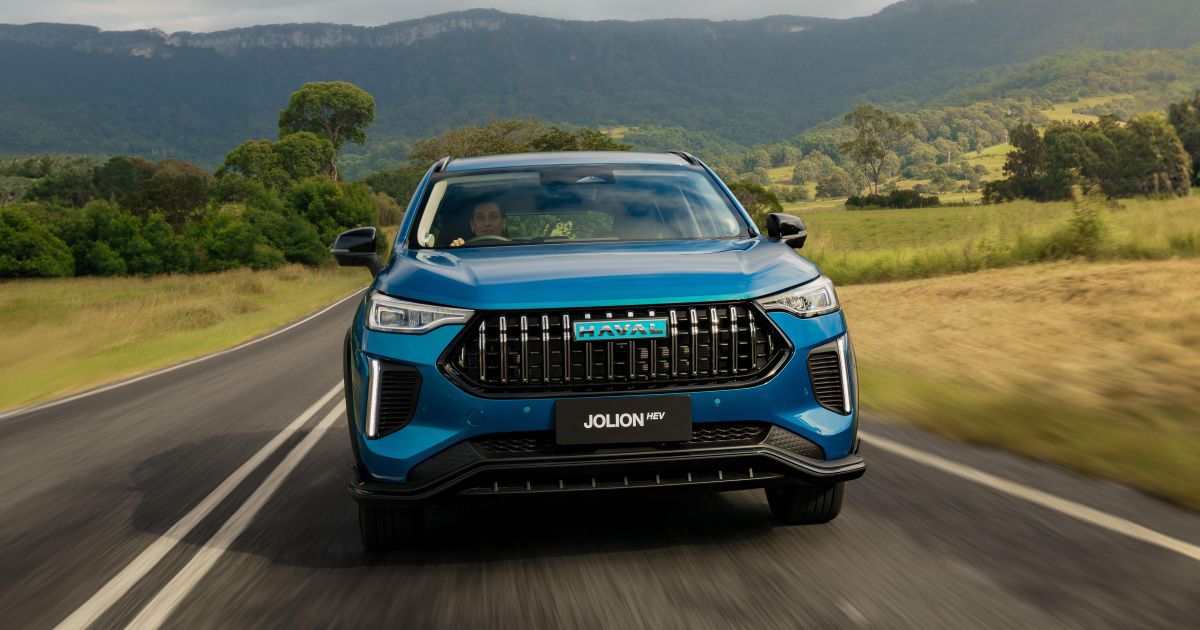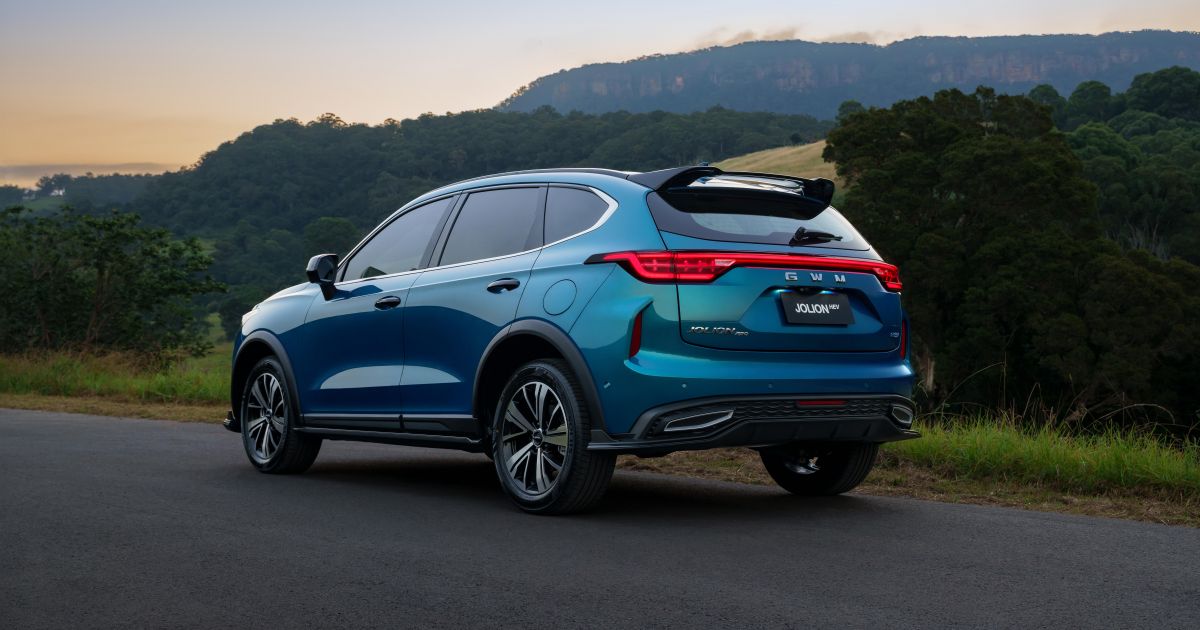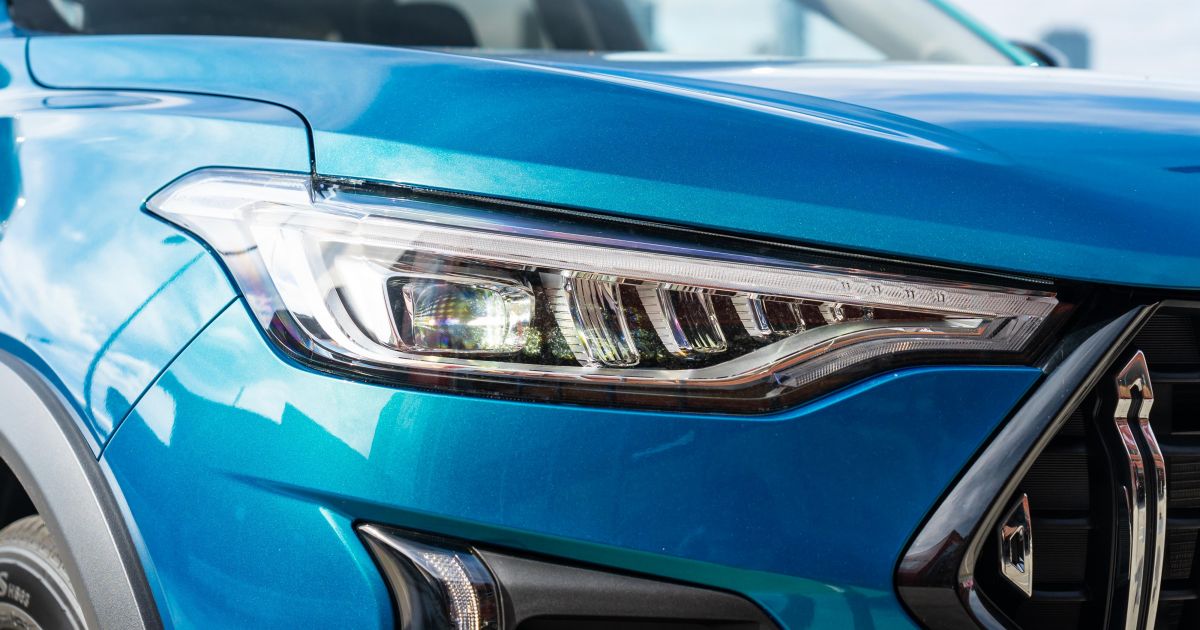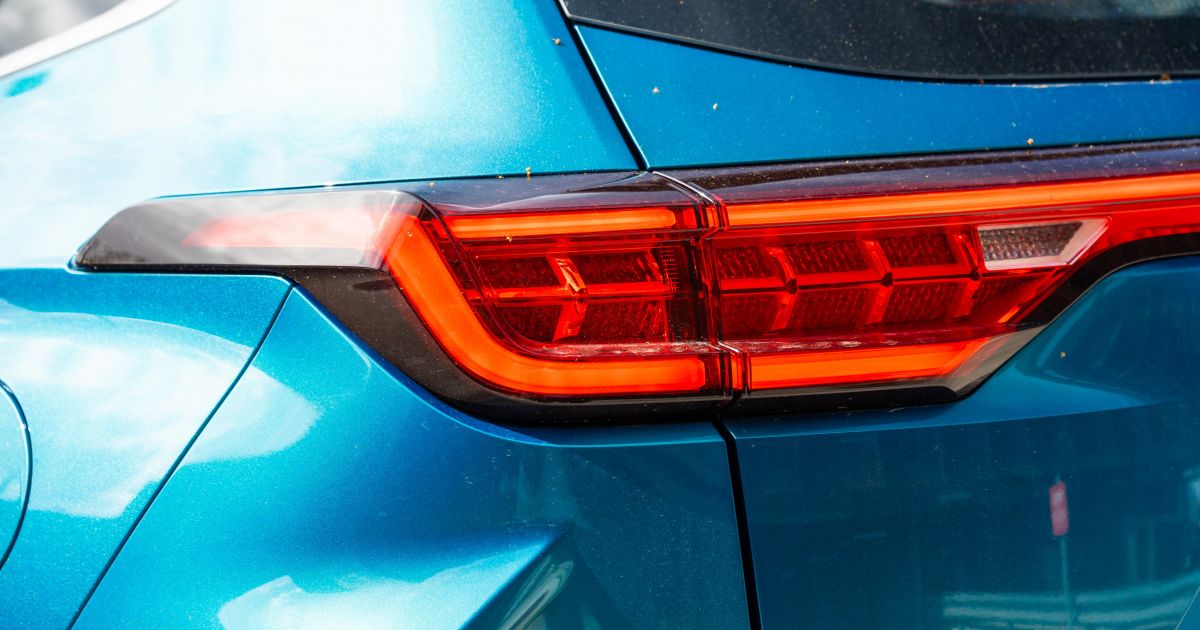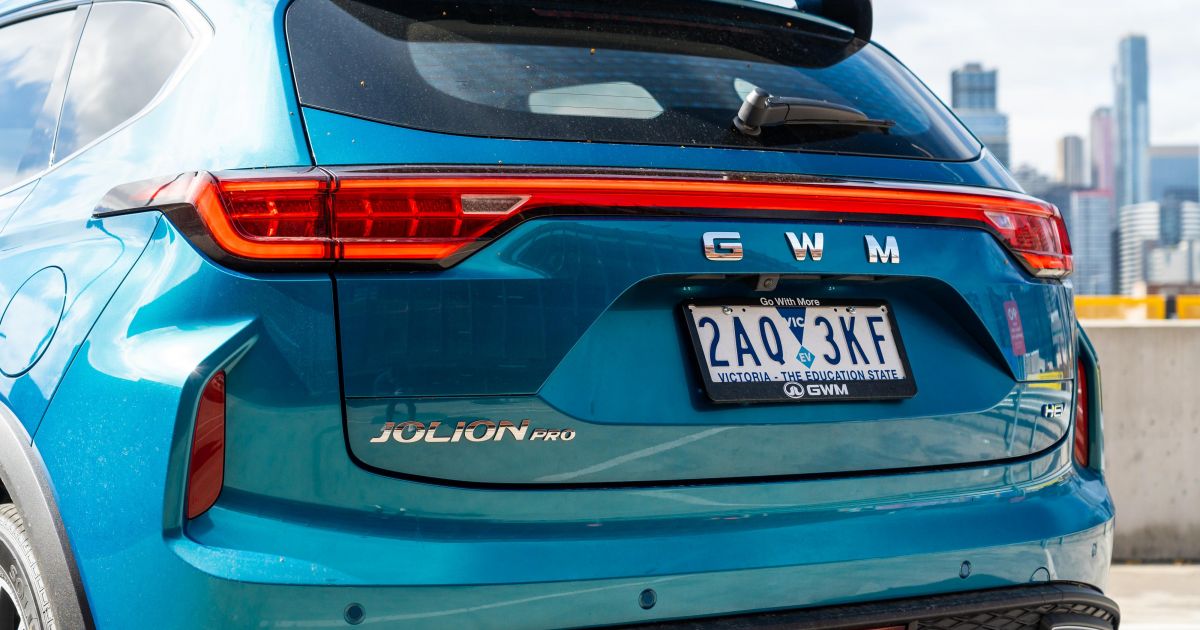Not a lot has changed for the GWM Haval Jolion Hybrid in 2025, and the benefits of that are in the eye of the beholder.
The whole Jolion range is still cheap – really cheap – which is great for people who simply want a good-value car and care less about what badge it’s wearing. You pay a bit more for the hybrids (HEVs), but that’s where GWM’s argument for value gets seriously compelling.
Smaller, cheaper hybrid SUVs aren’t necessarily a dominant force in Australia. There’s the fellow Chinese-made MG ZS Hybrid+, the japanese Honda HR-V e:HEV, the Korean Hyundai Kona Hybrid, plus a couple of Toyotas depending on which way you cut it – but that’s about it.
Granted, the Honda and Hyundai are tough acts to follow, but it’s not like the Jolion Hybrid is miles behind. Compared to standard Jolions, the Hybrid should offer greater fuel-efficiency, smoother and stronger performance, and less of an environmental impact for those worried about their carbon footprints.
All that, and the three hybrids are not that much more expensive than their petrol counterparts – so far, so good.
WATCH: Paul’s video review of the 2025 GWM Haval Jolion Lux Hybrid
Unfortunately, there’s been no major update to address previous concerns regarding the Jolion’s driver assistance tech, which has always been a key complaint of ours.
Service prices have also increased for models purchased after January 1, 2025, which means the total cost of ownership has taken a hit. Jolion Hybrids are more expensive to service than the ZS Hybrid+, and on another planet in the context of the HR-V.
In any case, GWM is still able to shift these things like hotcakes. In 2024, there were 14,238 Jolions sold, making it less popular than only the ZS with 22,629 sales and the Kona with 17,374 – including both petrol and hybrid vehicles.
On test here is the 2025 GWM Haval Jolion Lux Hybrid, the second-most expensive Jolion variant currently available. Is it the pick of the bunch?
How much does the GWM Haval Jolion cost?
The Lux Hybrid sits in the middle of the three-strong Jolion HEV lineup and commands a drive-away price of $35,990.
| Model | Drive-away price |
|---|---|
| 2025 GWM Haval Jolion Premium | $26,990 |
| 2025 GWM Haval Jolion Lux | $29,990 |
| 2025 GWM Haval Jolion Premium Hybrid | $32,990 |
| 2025 GWM Haval Jolion Ultra | $33,990 |
| 2025 GWM Haval Jolion Lux Hybrid | $35,990 |
| 2025 GWM Haval Jolion Ultra Hybrid | $38,990 |
Its most direct rival is the MG ZS Hybrid+, which is priced from $33,990 or $36,990 drive-away, depending on the variant.
Other competitors include the Honda HR-V e:HEV, which starts at $39,900 drive-away, and the Hyundai Kona Hybrid priced from $36,500 before on-roads.
It’s also comparable to the Toyota Corolla Cross in size but the smaller Yaris Cross in price, the latter of which starts at $30,900 before on-road costs.
To see how the GWM Haval Jolion stacks up against its rivals, use our comparison tool
What is the GWM Haval Jolion like on the inside?
Hardly complicated, but not as intuitive as we’d like.
The first thing you’ll notice is the lack of buttons. In this case, the general presentation is a prime example of what we’ve come to expect from a cheaper SUV; a small array of buttons in the middle and some sporadic switches and dials scattered elsewhere.
They’re at least all clearly labelled, and to its benefit there are a comfortable amount of physical buttons to be found on the steering wheel. We were also happy that we couldn’t find any gloss black trims anywhere.
That said, you still miss out on a physical climate control interface and instead have to dive into the 12.3-inch infotainment screen to adjust basic functions. You’d even be forgiven for struggling to find where to look for those at first.
There’s a small climate indicator in the screen’s top left, but that doesn’t feel right. You’ll then notice the physical A/C button below, confusingly placed next to a fan on/off button – which, if you’re coming from an older car, could be mistaken as a means to toggle between air-conditioning and just the fan.
That A/C button opens the climate menu, which can also be done by swiping up from the bottom of the screen – but only outside of smartphone mirroring. You’d get used to it over time for sure, but it’s just a bit clumsy.
In fact, most of the other buttons here are related to climate, yet the most-used controls like fan speed and temperature are still locked in the infotainment system.
The infotainment interface is a sparse, barebones setup. Graphically it’s simple, and once you figure out where everything is, it’s easy enough to operate. Unfortunately, there are more pointers to that lack of logic.
It annoys us that there are still poorly translated menus here. We can at least appreciate the few pearlers sprinkled in there for you to uncover when navigating the otherwise cumbersome menus.
A personal favourite is the option in the vehicle settings menu to adjust the “Front Washing Scraper Interval” or the reversing camera’s request to “Please watch out your surrounding”. In the grand scheme of things, these are inconsequential quirks, but they’re also reminders of how the Jolion could be viewed as somewhat half-baked.
We don’t love how the Jolion gets only wired smartphone mirroring either, which is fine at the bottom of the range but becomes disappointing by the time you get to the hybrid models. The Lux Hybrid at least gets the larger of the two infotainment displays available across the Jolion range to make up for it.
Further, the interior ergonomics leave a bit to be desired. The synthetic leather-trimmed seats are comfortable enough and it’s not impossible to find an appropriate driving position, but the steering wheel feels odd in the hands.
It has a relatively deep dish, which means it feels like the insides of your palms float above the wheel while your fingers sit awkwardly behind the two large spokes. I can only imagine it’d be worse if you had larger hands.
Further, the horizontal spokes sit quite high and obscure vision of the stalks behind. That means it’s a weird feeling when you first hop behind the wheel, almost like you’re holding at 10 and 2 o’clock instead of the safer nine-and-three alternative.
You can get used to it, and there’s enough space below the spokes if you want to drive in a more relaxed position using the soft armrests. It’s just another one of those weird ergonomic quirks, not helped by the fact that the wheel sits at a relatively shallow angle.
We can at least appreciate the buttons here, as they’re all finished in durable dull plastic and operate with a nice, tactile feel.
It’s a refreshing, if not somewhat inconsistent, change in context with the rest of the cabin. The buttons help to operate the two screens that are otherwise touch-only, and given it’s where your hands will be most of the time, it makes sense.
Where most other cars offer either dull plastics or glossy black, GWM has decided that the Jolion – and several of its other models – call for a different approach.
Instead, you get an obscure palette of glossy textured plastic, wavy-looking dashboard trim, brushed aluminium-style accents, and woodgrain-look finishes, among others. It’s an unassuming mix when you first jump in, but it becomes weirder the longer you look at it.
It isn’t the end of the world, but to our eyes it needs to be just a touch more cohesive. The same can be said for the layout of the interior as a whole, as none of the items in the middle of the cabin are centred.
Assuming the centre console is centred, the central vents are skewed to the left, and then the screen is slightly back to the right. We didn’t notice this at first, but now we can’t unsee it.
Beyond that, everything appears flat and basic at a glance. There’s a large slab of grey plastic surrounding the gear selector, which is spotted with three slots of varying sizes.
We’re not sure of the practical use for all these spaces. The leftmost one is fine, but the two on the right are odd – the larger one doesn’t comfortably fit the Jolion’s key, while the one on the right is barely wide enough for a pencil.
We may be using it wrong, and depending on the size of your phone, it could fit sideways in one of those slots. There’s at least a wireless charging pad ahead, which is nicely sized with a rubber insert, but it generates a bit of heat when in use.
Then there’s the gear selector, which is a rotary dial finished with a chrome metallic look. Strangely, instead of moving only enough to select Drive or Reverse, it can spin endlessly in either direction, albeit with a solid notchy action.
If you’re wondering where the cupholders are, they’re underneath that lid with the squiggly metal-like piece on top.
Connectivity options include two USB-A ports and a 12V outlet in the storage space below the centre console. That space is perfectly sized for smaller bags, and the high-ish edges on each side work well to keep things from sliding out.
Ahead of the driver is a 7.0-inch digital instrument cluster, and we unfortunately found some bugs here. Its layout is fine and easy enough to navigate using the buttons on the wheel, but the central gauge would sometimes flicker and glitch with cruise control active.
It wasn’t consistent, but it happened enough to raise our eyebrows. Otherwise, the screen is functional, though it will become harder to see in bright, sunny conditions – and it has a cheaper appearance than the unit in the ZS Hybrid+.
Moving to the second row reveals a space that’s on par with what you’d expect – it’s not at all flashy but has enough gear for passengers to keep comfy. Amenities include two directional air vents and dual USB-A ports on the back of the centre console, surrounded by scratchy plastic.
The seats are finished in that same synthetic leather found up front, and while the seat base is soft enough the upright portion is slightly too far reclined, a common trait among Chinese SUVs.
Still, the doors open wide enough to comfortably squeeze in. There’s also a fold-down centre armrest with cupholders, and the rear seats fold almost flat to expand boot space to its maximum of 916 litres.
Quoting 255 litres of capacity with the rear seats in place, the Jolion HEV’s boot is comparatively small. It’s much smaller than the 443 litres offered by an MG ZS Hybrid+ and the 360 litres of the Chery Omoda 5, and it’s even beaten by the 264 litres in the smaller Mazda CX-3.
Unfortunately, all hybrid Jolions also miss out on a spare wheel, while petrol versions get space-savers. Under the boot floor there’s no extra storage space; instead, there’s a large polystyrene floor that houses various recovery gear.
All in all, the Jolion’s interior is fine and certainly liveable in the long run. We don’t love the material and design choices of the dashboard in particular, but that’s all subjective and we suspect the average owner probably wouldn’t bat an eye.
| Dimensions | GWM Haval Jolion Hybrid |
|---|---|
| Length | 4470mm |
| Width | 1898mm |
| Height | 1625mm |
| Wheelbase | 2700mm |
| Cargo capacity | 255L (rear seats up) 916L (rear seats folded) |
To see how the GWM Haval Jolion stacks up against its rivals, use our comparison tool
What’s under the bonnet?
Jolion Hybrids are powered by a 1.5-litre naturally aspirated four-cylinder petrol engine mated with a 115kW/250Nm electric motor, driving the front wheels only. A “Dedicated Hybrid Transmission” – a two-speed continuously variable transmission (CVT) – is standard.
| Specifications | GWM Haval Jolion Hybrid |
|---|---|
| Engine | 1.5-litre 4cyl HEV |
| Engine outputs | 70kW/125Nm |
| Electric motor outputs | 115kW/250Nm |
| Combined system outputs | 140kW/375Nm |
| Transmission | Dedicated Hybrid Transmission (2-speed CVT) |
| Driven wheels | Front-wheel drive |
| Kerb weight | 1620kg |
| Fuel economy (claimed) | 5.1L/100km |
| Fuel economy (as tested) | 6.7L/100km |
| Fuel tank capacity | 55L |
| Fuel requirement | 91 octane regular unleaded |
| CO2 emissions | 118g/km |
| Braked tow capacity | 1300kg |
Our week with the car involved primarily highway driving, though there was the odd moment of heavy-footed acceleration. There was also some suburban driving, as well as brief inner-city stints.
Even so, our recorded real-world efficiency wasn’t very close to GWM’s claim.
To see how the GWM Haval Jolion stacks up against its rivals, use our comparison tool
How does the GWM Haval Jolion drive?
Maybe we weren’t impressed with the interior, but because that only makes up part of a car’s worth we were willing to wipe the slate clean before hitting the road.
On first impressions, the Jolion Hybrid is alright. It’ll start up in electric mode and quietly whirr away as you set off, and the steering is light enough to easily throw the car around as you exit a carpark without feeling flimsy.
As a matter of fact it does quite well in tight environments as a result, and fortunately there are plenty of cameras and sensors scattered around to see if you’re about to bump into something.
The Jolion remains quiet and refined when travelling around town, which is where the powertrain stays at low revs and relies more on electric power. It’s even capable on driving purely electric power at up to 80km/h, and there’s a one-pedal regen mode, too.
Its suspension setup is tuned well enough, to the point where doesn’t have many issues ironing out smaller bumps at lower speeds. Imperfections like tram tracks or the odd pothole won’t unsettle the Jolion in any meaningful way either, and we suspect the smaller wheels and chunkier tyres fitted to lower grades would be even better.
It’s the same story at higher speeds, where road and wind noise are louder but not too bad. So far Jolion Hybrid seems pretty decent – at least as a city car.
Unfortunately, some flaws start to show through once you hit the open road. For one, the transition from electric to petrol power could be smoother, as there’s a noticeable shift when the engine engages under hard acceleration.
Once the petrol engine is firing, it produces a fairly grating noise as the CVT allows it to rev endlessly. There are no simulated gear steps, which means the CVT is simply doing its job of keeping the engine in its ideal range for power delivery when necessary.
It’s just unfortunate that the small-displacement four-cylinder sounds the way it does. It almost sounds like it’s struggling to move the car when, in reality, it’s far from sluggish.
The combined kick provided by the engine and motor means the Jolion has no issue getting out of its own way. It just does it in such an uninspiring manner that you won’t want to push the accelerator pedal beyond halfway.
Still, it’s about as cheap as an SUV gets, and so it’s important to temper expectations before you hop behind the wheel. The issue is that it constantly reminds you of just how cheap it is, and that’s arguably most evident with the functionality of its driver-assist gear.
The Jolion still needs an overhaul of its safety tech.
While its driver monitoring system is generally tolerable, basic functions like wearing sunglasses will trigger repetitive warnings to pay attention to the road you never took your eyes off.
Having a camera lens pointed squarely at you the whole time you’re driving is also somewhat disconcerting. That growth on the driver’s side A-pillar isn’t particularly subtle, and if you want it disabled you’ll have to dive through the vehicle’s menu every time you start the car.
On-road, the lane centring is overreactive, and we struggled to trust the adaptive cruise control function due to its inability to convincingly adapt to the flow of traffic or steer clear of the lane markings on either side.
Driving analogue removes practically all of these issues. While it’s easy enough to simply not activate cruise control, it is a pain that you have to deactivate everything else as part of your car’s startup routine.
So there are a few layers of polish missing from the Jolion’s driving experience. While its power delivery may be better than its non-hybrid alternatives, we still find its CVT grating in the most stereotypical way such a transmission can be.
Its tech doesn’t do justice to its otherwise solid ride comfort either, as you’ll have spent too much time annoyed by a previously unknown beep before you even think about how the road feels under you.
That’s also not helped by its sub-par handling, as its prominent level of body roll in corners doesn’t at all echo the sporty exterior look created by the front lip spoiler, side skirts and rear spoiler on these ‘new-look’ Jolions. And don’t look too hard at its wheel-arches unless you’re planning to do something about that afterthought of a wheel offset.
What’s disappointing is it feels like there’s a good car is in there somewhere, but it’s clouded by an unrefined drivetrain and underdone tech, including simple things like an indicator that struggles to keep a steady rhythm.
Then again, it is a cheap car, and we reiterate that it’s preferable to the non-hybrid Jolion. A few more rounds of chiseling and sanding could place it comfortably above the realm of its petrol-only siblings.
To see how the GWM Haval Jolion stacks up against its rivals, use our comparison tool
What do you get?
There are now six variants in the Jolion range: two ‘old-look’ petrol grades, one ‘new-look’ petrol, and three ‘new-look’ hybrids. The hybrids share the same standard gear as their petrol counterparts.
2025 Haval Jolion Premium + Premium Hybrid equipment highlights:
- 17-inch alloy wheels
- Space-saver spare wheel (petrol only)
- Tyre repair kit (hybrid only)
- Tyre pressure monitoring
- Halogen headlights
- Torsion beam rear suspension
- Rain-sensing wipers
- Electric park brake
- Hill descent control
- Proximity entry with push-button start
- 3.5-inch instrument cluster screen
- 10.25-inch touchscreen infotainment system
- Wired Apple CarPlay and Android Auto
- 4-speaker sound system
- Air-conditioning
- Rear air vents
- 4-way manual steering wheel adjustment
- Cloth upholstery
- Paddle shifter
- Launch control (Premium Hybrid only)
Jolion Lux + Lux Hybrid add:
- 18-inch alloy wheels (Lux Hybrid only)
- LED headlights
- 7.0-inch digital instrument cluster
- Rear privacy glass
- 12.3-inch infotainment touchscreen (Lux Hybrid only)
- 6-speaker sound system
- Dual-zone climate control
- Luggage cover
- 6-way power driver’s seat
- Leatherette upholstery
- Heated front seats
- Leatherette-wrapped steering wheel
- Illuminated vanity mirror
To see how the GWM Haval Jolion stacks up against its rivals, use our comparison tool
Is the GWM Haval Jolion safe?
While the updated Jolion Ultra and Ultra HEV don’t have a specific safety rating, “all variants” of the GWM Haval Jolion have a five-star ANCAP rating based on testing carried out in 2022.
| Category | GWM Haval Jolion |
|---|---|
| Adult occupant protection | 90 per cent |
| Child occupant protection | 84 per cent |
| Vulnerable road user protection | 64 per cent |
| Safety assist | 92 per cent |
Standard safety equipment includes:
- 7 airbags
- Adaptive cruise control
- Autonomous emergency braking
- Pedestrian detection
- Cyclist detection
- Blind-spot monitoring
- Driver drowsiness detection
- Lane-keep assist
- Lane centring
- Emergency lane-keep assist
- Rear cross-traffic assist
- Safe exit warning
- Traffic sign recognition
- Rear parking sensors
- Reversing camera
Lux variants and upwards gain a surround-view camera, while the Ultra Hybrid also has front parking sensors.
To see how the GWM Haval Jolion stacks up against its rivals, use our comparison tool
How much does the GWM Haval Jolion cost to run?
GWM backs the Haval Jolion with a seven-year, unlimited-kilometre warranty, while high-voltage hybrid battery packs are covered for eight years with no kilometre limit.
| Servicing and warranty | GWM Haval Jolion Hybrid |
|---|---|
| Warranty | 7 years, unlimited kilometres |
| Battery warranty | 8 years, unlimited kilometres |
| Roadside assistance | 5 years |
| Capped-price servicing | 5 years or 70,000km |
Servicing is required after the first 12 months or 10,000km – whichever comes first – with subsequent services required every 15,000km. Capped-price servicing is offered for the first five years, but prices have increased from 2024 to 2025.
GWM Haval Jolion Hybrid models with a warranty starting date before January 1, 2025 still have a total capped-price service cost of $1650, for an annual average of $330 over five years.
| Service intervals | Pricing* |
|---|---|
| First service | $260 |
| Second service | $330 |
| Third service | $470 |
| Fourth service | $680 |
| Fifth service | $280 |
| Average annual capped-price service cost | $404 |
| Total capped-price service cost | $2020 |
*Pricing current as of January 1, 2025
For context, MG also covers its ZS Hybrid+ with five years of capped-price servicing, with a total cost of $1232 and an average annual cost of $246.4.
Honda, meanwhile, offers five years of capped-price servicing at an appetising price of $199 per service for the HR-V.
To see how the GWM Haval Jolion stacks up against its rivals, use our comparison tool
CarExpert’s Take on the GWM Haval Jolion
There’s a lot to take in with these updated Jolions, and it’s a mixed bag across the board.
On one hand, you have a small hybrid SUV that looks sharper than its petrol siblings thanks to a subjectively sleeker exterior design that makes it look a touch more compact.
While its plastic body kit isn’t too dissimilar to an eBay special that a P-plater would glue onto their 2015 Toyota GT86, we like that it’s something a little different that adds a touch of much-needed character to an otherwise bland-looking runabout.
We also adore the Arctic Blue paint job applied to our tester with its unique turquoise undertones – it looks much more premium than many of the colours available for other cars at this price.
The interior isn’t quite as nice in our eyes, but it’s still presented well enough so it doesn’t let the rest of the car down. The illusion fades a little once you start using it, as evidenced first by the weird ergonomics of the Jolion’s driving position.
It’s liveable, but we do wish the steering wheel was a bit flatter and had thinner spokes, and had a greater range of adjustment – nitpicks, perhaps.
What isn’t liveable, however, is GWM’s safety gear. Whatever flaws that exist with the drivetrain are overshadowed by the driver attention monitor and lane-keep tech, both of which feel like they’re working against the driver at all times.
Combine that with a dreary CVT and a wheezy engine – albeit heavily supplemented by a decent hybrid system – and you have a driving experience that gets old fast, especially on the freeway.
Turning the safety tech off is always an option, but that’s not something you should have to do. We’re also disappointed by the lack of refinement of the car’s interior displays, as the glitches we experienced with the instrument cluster are inexcusable. It can’t be that difficult to properly translate basic phrases either.
Once again, however, the GWM Haval Jolion is nothing if not cheap. Many buyers will gravitate to this compact hybrid SUV for that fact alone, and for those the Lux Hybrid is a great option for affordable hybrid motoring.
There are the makings of a tasty cake here. Interior and exterior design is of course subjective, but we think the Jolion HEV’s on-road behaviour would benefit massively from a few more minutes in the oven.
Interested in buying a GWM Haval Jolion? Get in touch with one of CarExpert’s trusted dealers here
Click the images for the full gallery

